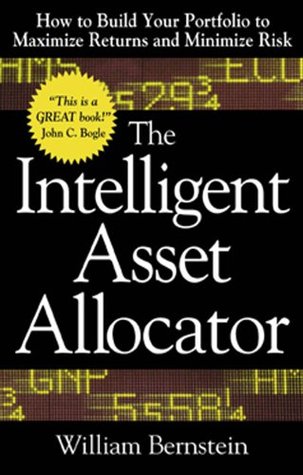More on this book
Kindle Notes & Highlights
Read between
December 19 - December 31, 2018
Today, stocks yield a full 4%–5% less than bonds. So I would not dismiss Dow 36,000 out of hand. But some skepticism is in order.
The holder of a foreign stock or bond is subject not only to the intrinsic risks of that security but also to the additional risk of currency fluctuation.
This currency risk can be eliminated (hedged) by selling forward a pound contract in the futures market at nominal cost.
this does not imply adverse portfolio behavior.
the advantages of hedging (lower individual asset risk, positive hedging return) and disadvantages (higher correlation with the rest of the portfolio) largely offset each other; in the very long run there is not that much difference in risk and return characteristics of hedged-versus-unhedged portfolios.
Over shorter periods, however, the differences can be considerable.
For those few people who are planning to spend their retirement in Europe or Japan, their eventual risk may be lessened by not hedging. In other words, since their liabilities will be in foreign currency, the chance of having sufficient funds to meet their needs is increased by not hedging.
The real cost of hedging has to do with the nature of forward currency contracts.
In effect, you are being paid to hedge these currencies. (This is because at the present time interest rates are lower in each of these countries by an amount equal to the forward premium rate.
And, if you own stocks or bonds exactly equal to your hedging amount, you will earn the forward premium no matter what happens to the exchange rate, as long as the forward premium stays intact.
Dynamic asset allocation refers to the possibility of varying your policy allocation because of changing market conditions.
Before proceeding further, let me be clear: Adherence to a fixed policy allocation with its required periodic rebalancing is hard enough.
you should not attempt dynamic asset allocation before mastering fixed asset allocation.
However, for what it’s worth, Figure 7-10 is a graph of P/B versus five-year forward average return.
Although there is some scatter, there is obviously a strong tendency for returns to be high with low starting P/Bs, and low with high P/Bs.
lower boundary of the data points forms quite ...
This highlight has been truncated due to consecutive passage length restrictions.
However, Figure 7-10 is a good reminder that when stocks get more expensive, their future returns are likely to decline, and that when stocks are very cheap, future returns are likely to be more generous.
Think of it this way—when you rebalance your portfolio in order to maintain your target allocation, you purchase more of an asset that has declined in price, and thus gotten cheaper.
you are “overbalancing.”
Dynamic asset allocation gets a bad rap because most investors change their allocations around in response to changes in economic or political conditions.
changes in allocation that are purely market-valuation driven are quite likely to increase return.
The overarching premise of this book is that rational investors, faced with the facts of modern investing, will make certain logical decisions and choices.
Human beings are not rational.
overconfidence, recency (which we have already mentioned), and risk aversion myopia.
The factors associated with overconfidence are intriguing.
The more complex the task, the more inappropriately overconfident we are.
Calibration (receipt of results) of one’s efforts ...
This highlight has been truncated due to consecutive passage length restrictions.
The longer the feedback loop between our actions and their calibration, the gre...
This highlight has been truncated due to consecutive passage length restrictions.
recency—we tend to overweight more recent data and underweight older data, even if it is more comprehensive.
First and foremost, it explains why most investors are “convex” traders.
“portfolio insurance” strategies in which equities are bought as prices rise and sold as they fall.
Financial history in fact suggests that because of recency the overwhelming majority of equity investors are convex—when prices rise, investors’ estimates of returns irrationally rise, and they buy more.
In the state of nature, our ancestors’ ability to focus on the risks of the moment had much greater survival value than a long-term strategic analytic ability.
Overemphasis on the possibility of short-term loss is referred to as risk aversion myopia
“the equity risk-premium puzzle”
the risk horizon of the average investor, was about one year.
Determine your basic allocation between stocks and bonds.
Your maximum stock allocation should be 10 times the number of years until you will have to spend the money.
Determine how much complexity you can tolerate.
Determine how much tracking error you can tolerate.
Planning for Taxes
These benchmarks, and the funds that track them, have relatively high turnover.
generating disproportionately large amounts of capital gains.
unwanted capital gains distributions are the result.
Moreover, as we saw in Chapter 6, the expense ratio is just the beginning, with commissions, spreads, and impact costs further lowering your returns.
Vanguard 500 Index Fund.
Vanguard Total Stock Market Index Fund
Vanguard Tax-Managed Growth and Income Funds.


